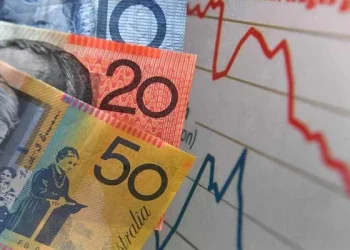The Pound Sterling (GBP) showed a lackluster performance against the US Dollar (USD) during Wednesday’s London session. The GBP/USD pair’s recovery from a more than five-week low of 1.2620 has stalled near the round-level resistance of 1.2700, as investors shift their focus to the upcoming United States (US) core Personal Consumption Expenditures Price Index (PCE) data for May, set to be released on Friday.
The US core PCE inflation data is a key indicator for the Federal Reserve (Fed), providing crucial insights into future interest rate decisions. Expectations are that annual underlying inflation softened to 2.6% in May from the previous 2.8%, with monthly figures growing at a slower pace of 0.1% compared to 0.2% in April.
Federal Reserve’s Stance on Interest Rates
Investors are currently anticipating that the Fed will begin its rate-cutting cycle in September, potentially extending it further into November or December. However, Fed policymakers remain firm on maintaining current interest rates until there is clear evidence that inflation is on a sustained path back to the 2% target.
Fed Governor Michelle Bowman recently advocated for the continuation of the current policy framework to manage price pressures, leaving the door open for additional rate hikes if disinflation does not progress as expected. She indicated that she does not foresee any rate cuts happening this year.
Pound Sterling’s Performance Against Other Major Currencies
While the Pound Sterling has performed strongly against many of its peers due to robust wage growth in the United Kingdom, it has weakened against the Australian Dollar. This follows Australia’s monthly Consumer Price Index (CPI) rising strongly by 4.0%, surpassing expectations of 3.8% and the prior release of 3.6%. This development has tempered expectations of rate cuts by the Reserve Bank of Australia (RBA).
Unlike the Swiss National Bank (SNB), the Bank of Canada (BoC), and the European Central Bank (ECB), which have started their policy-easing cycles, the Bank of England (BoE) has not signaled imminent rate cuts. The UK’s high wage growth is keeping inflation persistent in the service sector, making rate cuts inappropriate for the time being. Despite headline inflation returning to the target rate of 2%, service inflation remains a critical measure for the BoE’s interest rate decisions.
Outlook for the Bank of England and Political Uncertainty
Investors currently expect the BoE to begin reducing interest rates at its August meeting. However, political uncertainty in the UK could keep the Pound Sterling volatile. Market participants are anticipating the first round of UK parliamentary elections on July 4, with the opposition Labour Party perceived to have an edge over the Conservative Party.
As the market navigates these developments, the performance of the Pound Sterling against the US Dollar and other major currencies remains closely watched, with economic data and political factors playing significant roles.
Related Topics:

























